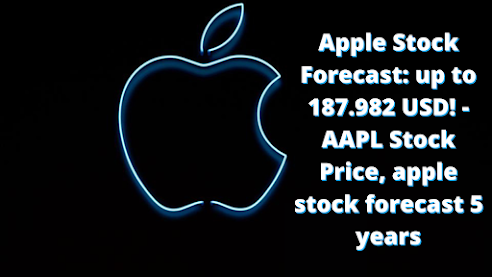The Starter Guide to Dashboard Design
The Starter Guide to Dashboard Design
What is dashboard plan and what difference does it make?
Dashboard configuration is the interaction and approach you take to plan your dashboard which incorporates everything from how to plan for a particular crowd to choosing and putting together information perceptions.
Dashboards show data with information representations. For organizations, dashboards are utilized to track and show KPIs, measurements, and other key information focuses. Planning a dashboard is a method for powerful correspondence that clients can peruse initially to comprehend current execution and access data that in any case would have been layered in complex informational indexes.
While it may not appear to be nothing to joke about, dashboard configuration matters with regards to how your clients decipher and activity the information. Dashboards are:
Intuitive, show live and chronicled information, and frequently unite numerous measurements
An approach to screen known spaces of interest or objectives
An indispensable wellspring of data for organizations and workers to settle on information driven choices
What's more, before you even begin to fabricate a dashboard, there are a couple of inquiries you should pose to yourself. This will assist you with planning a dashboard that individuals will need to reference or go to for bits of knowledge:
Who is my crowd?
What data do they require?
What do they definitely think about the measurements?
What is their degree of involvement in information?
What are their biases as far as representations and tones?
The dashboard plan brilliant guideline: Define your crowd
A first rate dashboard is one that imparts a reasonable message. It tends to be not difficult to fail to remember that business dashboards are a specialized apparatus used to pass on data about your exhibition. That implies that dashboards observe a similar brilliant standard as other specialized instruments like a book, site, or TV show: know who your crowd is.
As an author, my initial step is to characterize my crowd before I even put pen to paper (or, uh, fingers to console). What benefit is a piece of content in the event that it doesn't resound with your crowd? A similar standard ought to be applied to dashboard plan.
It's not difficult to consider yourself the default crowd. What's more, it's not difficult to accept that every individual who is taking a gander at your dashboard is in total agreement. Try not to fall into that snare!
Here's a tip: Imagine that your crowd is another representative and it's their first day at work. The intention is to raise them to an acceptable level on your business execution so they can waste no time.
Keep in mind, the relationship you have with your information is not quite the same as the relationship your crowd has.
With regards to your crowd and your dashboard, setting is above all else. Understanding your crowd will likewise assist you with understanding their necessities. A leader needs a dashboard that sums up key execution measurements to settle on choices about the business, though a web-based media director needs a dashboard that features key measurements from social channels like Twitter, Facebook, or LinkedIn to comprehend crusade execution or holes. Comprehend the setting of the dashboard before you start to guarantee it upholds the objectives and goals of the client.
Dashboard configuration best practices
You can container dashboard configuration best practices into seven classes. I'll clarify each inside and out, yet here's a brief glance at each best practice:
Plan various dashboards for various business needs
Add correlation esteems
Think about your dashboard design
Pick the right representations
Legitimate utilization of shading
Simple to-understand data
Plan for various presentations
Plan various dashboards for various business needs
Try not to pack the entirety of your information onto one dashboard. Keep in mind, the place of a dashboard is to have the option to rapidly burn-through bits of knowledge, so if your crowd can't gather experiences initially, there's presumably an excessive amount of information on your dashboard.
Deliberately plan your dashboard configuration dependent on various divisions, missions, and ventures
Make various dashboards for various business needs or information to give fast admittance to KPIs and measurements that are coordinated corresponding to each other
Add examination esteems
Correlation esteems add setting to current numbers by contrasting them with recorded qualities or targets
Examination esteems in perceptions separate among great and awful execution initially
On the off chance that you can't concoct a significant correlation an incentive for a measurement, it probably needn't bother with it (and adding one only for it could occupy from important data on your dashboard)
Think about your dashboard format
There are five plan rules that a powerful dashboard design ought to follow.
Pecking order
Make a visual pecking order so your data falls naturally and upholds coherence. A decent principle to follow is that the main data goes in the upper left quadrant of your dashboard.
Utilize a visual order to show the main data originally followed by auxiliary data
Consider position and shading to guarantee what you need your crowd to peruse sticks out - shading, differentiation, and void area would all be able to have a colossal visual effect
Nearness
Related information has a place together so clients don't need to search for related measurements across your dashboard; information focuses should stream legitimately and instinctively
Equilibrium how you space your representations - give sufficient space to breathe so they don't look jumbled, however don't give such a lot of that it's difficult to determine what has a place together
Differentiation
Use tone and differentiation to make a particular representation stick out
Utilize various sizes to get down on different perceptions (bigger representations could demonstrate an expanded degree of significance)
Use bolding to make text stand apart on your dashboard
Arrangement
When in doubt, all content ought to be left adjusted to coordinate with the manner in which a great many people read
Adjust your measurements on your dashboard for simple perusing from left-to-right
Reiteration
Reuse thoughts and components to make a typical subject on your dashboard
Pick the right dashboard representation
Picking the right dashboard perception for your measurements is apparently perhaps the main components of dashboard plan. For an inside and out take a gander at the sorts of information perceptions accessible for your dashboard, look at our manual for information representation.
You can look over various representation types to envision your information. This is a comprehensive rundown of information perception types accessible in PowerMetrics:
Bar diagram
Line diagram
Pie or doughnut diagram
Tree map
Radar diagram
Cascade diagram
Warmth map
Rundown diagram
Table
Dissipate or air pocket diagram
Blend diagram
Here's a concise outline of four populace perception types and tips on when and how to utilize them adequately in your dashboard plan.
Tables
Tables put together information into segments and columns. Tables are likewise quite possibly the most adaptable dashboard information perceptions since you can utilize it to show graphical components like slug diagrams, sparklines and symbols. Moreover, tables can be designed to have drill down usefulness or make a heatmap.
When do I utilize a table to imagine my information?
To show two-dimensional informational collections that you can coordinate by class
To add extra graphical components like a projectile diagram to add setting
To penetrate down enormous informational indexes that have a characteristic drill way, for instance, Country > Province > City
Line outlines
Line outlines plot a progression of information focuses on a chart and afterward associate those specks with a line to show designs in the information. Line outlines are an optimal representation in case you are attempting to spot patterns a lot, however remember that line graphs don't show the specific qualities (yet you can choose the qualities as names in PowerMetrics).When do I utilize a line diagram to picture my information?
For time-series arranged information focuses
To comprehend general patterns, vacillations and examples related with your informational index
To look at least two related informational collections
To analyze patterns after some time
Bar or segment graphs
Bar diagrams or section outlines show esteems as rectangular bars to think about completely related qualities along a hub. For instance, showing esteems related with various nations bodes well on the grounds that there is a classification relationship.
When do I utilize a bar graph to imagine my information?
Think about at least two qualities that fall inside a similar classification
To show your absolute information as a stacked bar or section to see the complete worth divided by every subtotal
Pie or doughnut outlines
Like bar outlines, pie or doughnut graphs show all out information however partition it into segments (like wedges of a pie or doughnut) so you can see each segment's worth in contrast with the entirety. To see the particular qualities for each portion, you can float over with your mouse to see the tooltip.When do I utilize a pie diagram to picture my information?
To rapidly pass on data without an excessive number of sections (this can debilitate the effect of the perception)
Legitimate utilization of shading
When in doubt, it's ideal to utilize desaturated colors for perceptions. Immersed colors have a time and location — use them to deliberately cause to notice changes and markers in your information.
Be predictable with your utilization of shading for similar information on various diagrams. For classes that have an innate arrangement or relationship like time, hazard levels, grade levels, or lead movement, make it simple for clients by utilizing similar tint for all things, yet differing the immersion of the shading.
Traffic signal tones—red, green, and yellow—ought to be utilized sparingly. Serious issues ought to be red and openings ought to be green so they stand apart on your dashboard. Yellow commonly addresses a center ground, so it might not outwardly affect a dashboard. Our recommendation is to avoid yellow!
Ensure your data is not difficult to peruse
Build up and carry out a restricted arrangement of reliable images on your dashboard to make for simple perusing.
I referenced it before, yet dashboards ought to be planned with the goal that your most significant data is in the upper passed on quadrant to coordinate with the .



Comments
Post a Comment